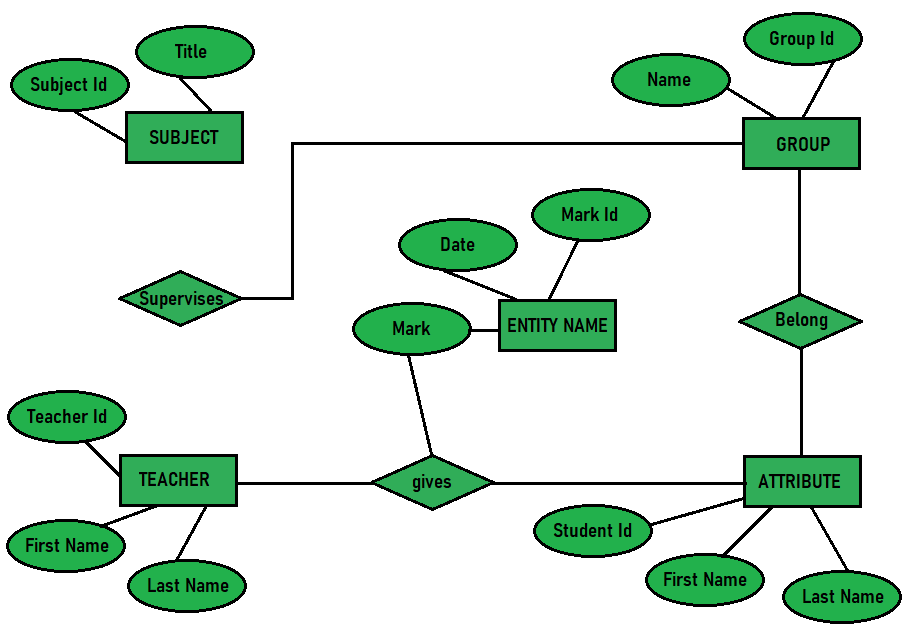1.数据流程图(DFD):
数据表示信息,流程表示移动,图表表示表示某些内容的图片。因此,DFD只是数据或信息流的图形表示。它是数据系统的框架或模式。它包括数据输入,数据输出,存储数据。 DFD描述了将数据作为输入,存储数据,将数据作为输出的过程。 DGD描述了完成该过程的数据路径。
DFD主要有两种类型:物理数据流程图和逻辑数据流程图。
DFD示例–柠檬水摊位

2.实体关系图(ERD):
ERD也称为实体关系模型。 ERD最初是由Peter Chen提出的。实体是指用于存储信息且可区分的任何对象,关系是指连接,而图/模型是指图片用来表示某些东西。因此,ERD只是用于表示或显示存储在数据库中的实体或数据对象之间的关系的图或模型。 ER模型的主要组件是实体,属性和关系。这是表示数据库设计的一种非常简单的方法。
ERD示例–学校信息管理

DFD和ERD之间的区别:
| S.No. | DFD | ERD |
|---|---|---|
| 1. | It stands for Data Flow Diagram. | It stands for Entity Relationship Diagram or Model. |
| 2. | Main objective is to represent the processes and data flow between them. | Main objective is to represent the data object or entity and relationship between them. |
| 3. | It explains the flow and process of data input, data output, and storing data. | It explains and represent the relationship between entities stored in a database. |
| 4. | Symbols used in DFD are: rectangles (represent the data entity), circles (represent the process), arrows (represent the flow of data), ovals or parallel lines (represent data storing). | Symbols used in ERD are: rectangles (represent the entity), diamond boxes (represent relationship), lines and standard notations (represent cardinality). |
| 5. | Rule followed by DFD is that at least one data flow should be there entering into and leaving the process or store. | Rule followed by ERD is that all entities must represent the set of similar things. |
| 6. | It models the flow of data through a system. | It model entities like people, objects, places and events for which data is stored in a system. |